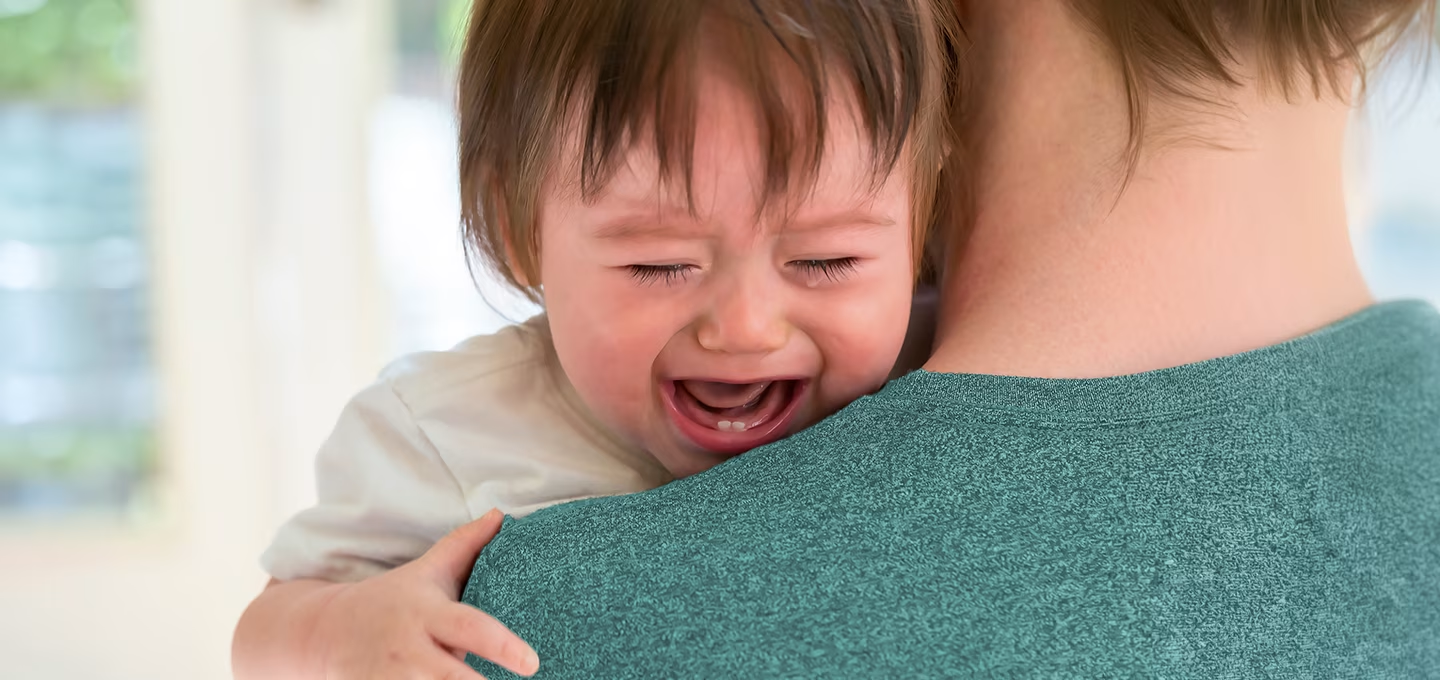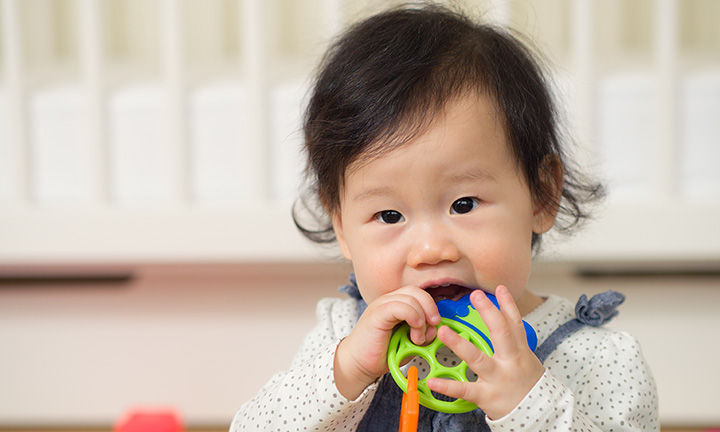
How to Soothe a Teething Baby: Natural Teething Remedies and More
When your baby starts teething, it can be a challenging time for both you and your little one. While over-the-counter medications exist, many parents seek natural teething remedies to soothe discomfort without relying on synthetic ingredients. Common natural options include chilled (not frozen) teething rings, cold washcloths for chewing, and gentle gum massages.
Key Takeaways
Here’s a quick overview of popular (and safe) natural remedies:
Some parents also turn to teething necklaces; however, they are not recommended due to the risk of strangulation and choking. Always supervise your baby and consult your healthcare provider before trying new remedies.
In the next section, we’ll explore each of these teething remedies in more detail to help you find what works best and learn how to use them safely.
When Does Teething Start and What Are the Symptoms?
Teething typically begins around 6 months of age, though some babies start earlier or later. This natural process happens when a baby’s first teeth (also called primary teeth) begin to break through the gums. Common signs of teething include:
If your baby is showing any of these signs, they might be teething. Fortunately, many natural teething remedies can offer comfort and relief.
Here are some common questions from parents:
Can teething cause changes in a baby’s poop? Yes, some parents report looser stools or changes in poop during teething, though this isn’t medically confirmed. Always check with your healthcare provider if it seems unusual or lasts more than a few days.
Can my baby get a diaper rash from teething? While not medically proven, some parents observe diaper rash during teething, possibly from extra drool being swallowed and passed through the system.
Curious how teething fits into your baby’s development? Track key milestones and see what’s coming next.
Natural Teething Remedies
When you’re seeking some teething pain relief for your baby, it’s comforting to know there are safe, natural ways to help ease their discomfort. So, if you’re wondering how to help your teething baby, below are gentle options that are backed by our trusted medical sources for you to try at home. Of course, if in doubt, always consult your healthcare provider.
1. Teething Toys and Rings
Why it helps: Babies love to chew when teething. A baby teething toy or teething ring made from food-grade silicone or rubber provides a safe and satisfying texture for sore gums.
Safety tip: Avoid teething toys with gel fillings, hard plastic, or detachable parts. Refrigerate (don’t freeze) for extra relief. Gloves for teething can also be soothing and easy for small hands to use.
Tip
Choose a teething toy that's easy for your baby to hold onto. Avoid teething toys made from wood or solid plastic, or gel-filled toys, as these could break or freeze when cooled.
2. Cold or Frozen Items
Cold relief can numb sore gums. It’s important to note that you should only give babies frozen or cold food once they have started solids. Try these cool options:
Tip
Don't leave your child unattended while sucking or chewing on the washcloth or any frozen items, as this can be a choking hazard. Avoid giving your baby food or items that are frozen solid.
3. Breastmilk and Breastfeeding
It’s common for parents to wonder if they can continue breastfeeding while their baby is teething, and they often ask, “Does breastfeeding help with teething?” You can, of course, still breastfeed when your little one starts teething. While not a direct teething remedy, many parents find that breastfeeding during teething helps comfort their baby through closeness and soothing suckling.
According to La Leche League International, some babies may nurse more frequently when teething for comfort, while others may temporarily pull away if their gums are sore.
If your baby bites or finds it difficult to latch during feeding, try offering a chilled teether or a gentle gum massage just beforehand to help numb the gums and reduce the urge to bite.
4. Cup Feeding
If your baby is older than 6 months, you can give them a sippy cup with cold water to help soothe their gums. You could also give them breastmilk in a cup if you’re having difficulty breastfeeding while your little one is teething.
5. Massage for Gums and Face
Gently massaging your baby’s gums with a clean finger when they’re teething can ease pressure and pain. After washing your hands, use your fingers to carefully rub your baby’s gums with gentle, circular motions. Your baby might instinctively start to suck or chew on your fingers, and that’s OK, too!
Massaging their gums can be especially calming before naps and bedtime.
6. Herbal Teething Remedies (Use With Caution)
Some parents explore natural teething remedies like chamomile or clove oil. Here’s what trusted sources say:
Important: Always consult your baby’s healthcare provider before trying any herbal remedy. Products like belladonna or other homeopathic drops have been linked to serious health risks and are not recommended.
7. Comfort and Cuddles
Cuddles, warm baths, and calming music can’t cure teething pain, but they can ease your baby’s stress and help them relax. Try these soothing strategies:
A relaxed baby may cope better with the discomfort of teething.
Tip
One of the main signs of teething is drooling, which can lead to drool rash. Help protect your baby’s skin and clothes with soft bibs, which you can also use to wipe your baby's chin, keeping their face clean, dry, and comfortable!
Get Rewarded for Soothing Snuggles
Download the Pampers Rewards app to turn your diapers into discounts. Earn $10 Pampers cash after 10 diaper scans; most boxes have 2 scans!
Teething Medicine for Babies
If natural teething remedies aren’t enough, your healthcare provider may suggest over-the-counter options, like infant acetaminophen or ibuprofen (only for babies over 6 months). Always follow dosage instructions exactly.
Avoid These Products:
Speak to your child’s healthcare provider before using any medicine and to find the best medicine for your teething baby.
Here are some common questions from parents:
What time of day is teething pain usually worse? Many parents notice teething discomfort peaks in the evening or overnight, likely due to tiredness and fewer distractions.
What are the signs that natural remedies aren’t enough? If your baby is inconsolable, refusing to eat or drink, or has a fever above 100.4°F, consult your healthcare provider—it might be something more than teething.
Teething Treatments: What to Avoid
Not all remedies are safe. Avoid these popular—but risky—methods:
Teething Necklaces, Bracelets, and Other Jewelry
Experts do not recommend using teething necklaces, bracelets, and other jewelry, including amber teething necklaces and bracelets, as they are a choking hazard. Teething necklaces can also cause mouth injuries or infections and, in rare cases, strangulation.
Teething Medicines with Benzocaine or Lidocaine
As mentioned above, the best teething medicine is whatever your child’s healthcare provider recommends. Many teething gels and ointments for babies can either wash out of your child’s mouth before getting the chance to be effective or are harmful if swallowed in large amounts. For example, medicines containing benzocaine or lidocaine can even be fatal.
Homeopathic Teething Remedies
Again, always heed the advice of your baby’s healthcare provider when it comes to using teething gels, ointments, tablets, or other medications for babies. Some common ingredients, like belladonna, have been linked to medical issues, such as seizures.
Sleep is important to both your little one and you! For some soothing sounds for baby (and you!), incorporate Tiny Tales from Pampers into a relaxing bedtime routine.
How to Soothe a Teething Baby at Night
Baby teething pain can strike at any time, including at night when your little one is sleeping. If your teething baby is waking up at night, you may be searching for ways to soothe pain while sleeping. Though there aren’t any techniques specific to nighttime teething, you can use the general home remedies for your teething baby at night, too.
You can also incorporate the following soothing tips into your regular bedtime routine to help soothe and calm your little one:
Better Nights Start Here.
When teething disrupts sleep, comfort matters more than ever. Try Pampers Zzz overnight diapers for extra overnight protection and Pampers Sensitive Wipes for gentle cleanups that keep baby comfortable from bedtime to morning.
When to Call Your Baby’s Healthcare Provider
Besides being aware of what to avoid when it comes to teething soothers, it also helps to know when to contact your baby’s healthcare provider.
Many parents wonder if teething can cause fever, especially at night. Although a slightly elevated temperature, sometimes called a low-grade fever, is possible, teething generally doesn’t cause fever. If your little one has a rectal temperature higher than 100.4 degrees Fahrenheit, it’s not likely due to teething, and you should contact their healthcare provider.
In addition to consulting your baby’s healthcare provider about fever, contact them in the following situations:
FAQS AT A GLANCE
Natural teething remedies include chilled teething toys, cold washcloths, gentle gum massages, and soothing cuddles. Some parents also find comfort techniques like warm baths or breastfeeding helpful. Always consult your baby's healthcare provider before trying new remedies.
The Bottom Line
Teething can be tough, but it’s a natural and temporary part of your baby’s development. By using safe, natural teething remedies like chilled washcloths, gum massage, breastfeeding, and chilled rubber chewing toys, you can offer your little one comfort and relief. Always talk with your healthcare provider if symptoms worsen or don’t improve.
And remember, once those little teeth start popping through, it’s time to start brushing!
- American Academy of Pediatrics. Caring for Your Baby and Young Child: Birth to Age 5, 7th ed. (New York: Bantam Books, 2019).
- Kids Health: Keeping Your Child’s Teeth Healthy
- FDA: Safely Soothing Teething Pain in Infants and Children
- Mayo Clinic: Infant and Toddler Health
- Healthy Children: Bathing Your Newborn
- Healthy Children: How to Help Teething Symptoms Without Medications
- Kids Health, Children’s Mercy: Teething Tots
- Mayo Clinic: Teething: Tips for Soothing Sore Gums
- Healthy Children: Teething Pain Relief: How to Soothe Your Baby's Discomfort
Read more about Baby
Related Articles
Join a World of Support
through Pregnancy and Parenthood.
TRACK WITH TOOLS
LEARN WITH EXPERTS
GET REWARDED







